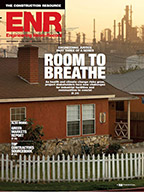Outwardly, retail centers seem to have come full circle over the past 80 years, morphing from sidewalk shops that formed a main street during the first half of the 20th century to suburban strips in the ‘50s to the indoor malls of the ‘70s and now—back again to “town centers” which mimic the look and feel of those initial main streets.
Over the past decade or so, two trends have conspired to undercut the traditional importance of shopping centers as focal points for the communities in which they are located. First, consumers now have tremendous opportunities to buy goods at lower prices because of both e-commerce and big-box commodity retail centers. Rather than fighting crowds of shoppers for that elusive parking spot only to find the items they need or want are out of stock, many consumers now opt for the price and convenience of the local power center or do their shopping online in the comfort of their own homes.
The other trend that has negatively impacted shopping centers is the fact that the differences between retail centers are fading. As Edward T. MacMahon, a senior resident fellow at ULI, noted in a recent article in Planetizen: “If you were dropped along a road outside of most American cities or towns, you wouldn’t have the slightest idea where you were because it all looks exactly the same: the building materials, the architectural styles, the chain stores, the outdoor advertising.”
We are often faced with a collection of big-box buildings and power strip centers that contain unexceptional design lacking a soul and the true spirit of “place.”
The over expansion of retail development has affected many specialty retailers, turning them into commodity retailers. At the same time, nearly 20 % of all shopping, by some estimates, is done online. Finally, the millennial generation is not as interested in “stuff” as they are in experiences.
Placeless-ness in today’s suburban living and their flavorless architectural experiences can be traced to conventional suburban development over the last 50 years. This pattern of development has contributed to a depletion of our natural resources, a reliance on the automobile and an indifference to our social connections. The prevalence of such “placeless” development projects has challenged designers and architects to do more to restore the sense of “place” that shopping centers formerly took for granted.
In short, what can be done to make that visit to a shopping center not just something driven by necessity, but an event that can be fun, uplifting and even memorable? Are there opportunities to develop a sense of place in today’s suburban areas and edge cities?
One of the best examples of place-making in a suburban region is Bethesda Row in Bethesda, Md. In 1994, Bethesda Row was an auto-dependent commercial strip that lacked character. The location had some solid advantages, a strong demographic base, an existing parking garage and access to transit. The project turned an outdated mode of suburban development into a mixed-use, multi-block development that was more urban and much more human scaled. The project’s placemaking attributes focused on both the street experience and connectivity to the community, creating a unique, walkable and memorable experience.
Clearly, not all shopping centers are going to follow the Bethesda Row example. From a practical standpoint, it would not be financially feasible for projects without the correct demographics and market. Moreover, if every retail center became another Bethesda Row, there would be nothing special to attract patrons. To MacMahon’s point, they would all look exactly the same.
But Bethesda Row clearly has had a profound impact. On one end of the spectrum, the country is seeing more shopping “destinations.” A recent example of this is Station Park in Farmington, Utah, 16 miles north of Salt Lake City. A transit-oriented project that derives its name and much of its design inspiration from the on-site commuter rail station at the northern terminus of Utah’s new “Front Runner” rail transit system, Station Park encompasses more than 800,000 sq ft of retail, entertainment, restaurant, office and hotel space.


Post a comment to this article
Report Abusive Comment